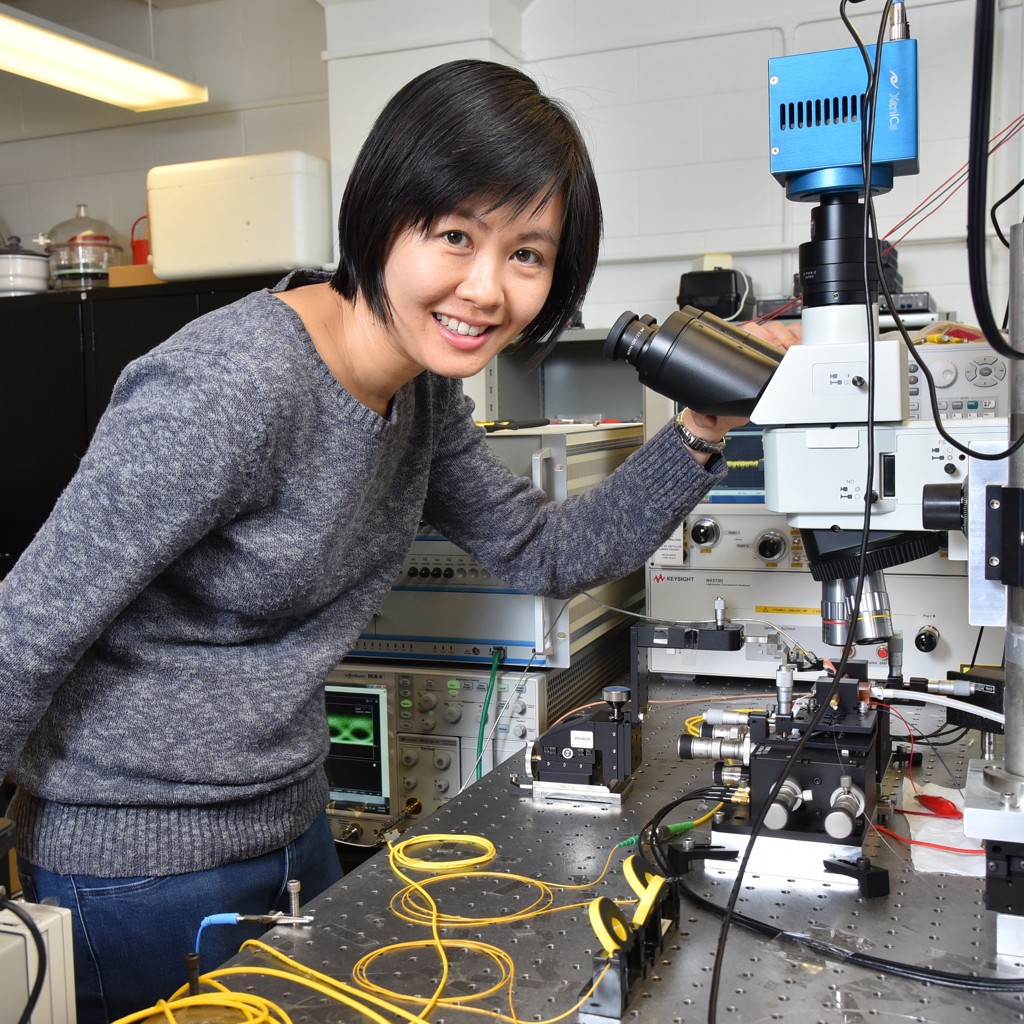Joyce Poon
University of Toronto, CanadaFor outstanding contributions to the research and development of silicon-based integrated optics including micro-resonators, electro-optic modulators, and integrated hybrid photonics.

Joyce Kai See Poon, professor of electrical and computer engineering at the University of Toronto in Canada, had her life shaped by a radical change during her childhood: relocating to a new culture on a different continent.
Born in Hong Kong, Poon moved with her family to Canada when she was just 10 years old. The differences between the two countries left a deep impression on her. She remembers Hong Kong as a crowded city with little outdoor space where children could run and play, and with a rigid school system and strict teachers. “I think if I stayed there, I'm not sure I would have survived academically,” she says.
Poon's father was a physician and her mother a nurse, so she had some familial exposure to the medical profession throughout her youth. Early on, she realized that science was all about trying to explain and understand the natural world, and she found the logic of the scientific process appealing. But she also liked to craft things with her hands: drawing, painting, and building small robots.
After high school, Poon was considering the pre-medical undergraduate program at the University of Toronto so she could follow in her parents' footsteps. The cutthroat competitiveness of the other pre-med students, however, turned her away from that idea. “I was really stressed out even in orientation,” she says. In her view, the engineering professors and students seemed more focused on a positive learning experience, so Poon chose to specialize in engineering science and later biomedical engineering at the end of her second undergraduate year.
Her academic path took one more twist. She took a summer job in the University of Toronto's physics department and selected the only project that she thought she could successfully complete: building an industrial laser. She enjoyed the challenge of getting the laser to work so much that she switched into engineering physics. Finally, a class in semiconductor device physics opened her eyes to the possibilities in photonics.
As a graduate student at the California Institute of Technology, Poon worked under Amnon Yariv, now an OSA Honorary Member. She did her dissertation research on coupled-resonator optical waveguides, then joined the faculty at her alma mater in Toronto. She has authored dozens of journal papers, including three that are widely cited in the field of coupled micro-resonators, and she has collaborated with scientists at other institutions on three-dimensional integrated silicon photonics.
Poon first learned about OSA by reading Optics & Photonics News as an undergraduate. At Caltech, she founded the OSA student chapter and visited nearby elementary schools to teach children about optics. She also received an OSA graduate fellowship. Now she interacts with OSA by frequently reviewing journal submissions, participating in the technical program committees for several Society conferences, and serving on ad hoc committees. She also served on the OSA Publications Council.
Today, Poon says, is an exciting time for photonics, because the end of Moore's law—the observation by Intel co-founder Gordon Moore that the number of transistors in an integrated circuit doubles every two years—means that the semiconductor foundries are opening up their manufacturing technology to photonic devices. Poon calls the foundries “the most amazing manufacturing infrastructure on the planet.” This change could lead to mass manufacturing of complex nanoscale photonic and optoelectronic devices, in which “integrated photonics can be deployed into new applications beyond communications,” she says.
Poon still holds her Caltech doctoral adviser in high esteem. “Amnon [Yariv] is really an incredible embodiment of an engineer, scientist, educator, entrepreneur, and a leader in our field,” she says. “The older that I get, the longer that I work in my field, the more I am truly impressed by his achievements.” Out of the pantheon of great scientific discoveries, however, she holds dear one that happened at the University of Toronto: the first use of insulin as a medication for diabetes back in 1922. Frederick Banting and Charles Best sold their rights to their discovery to the university for a dollar, she says, “because they believed that their discovery should benefit all mankind.”
To young people considering scientific careers, Poon advises against listening to naysayers outside the profession: “Just because they think it's hard doesn't mean it actually will be hard for you.”
Photo credit: Rodney Daw
Profile written by Patricia Daukantas, Science Writer/Editor
